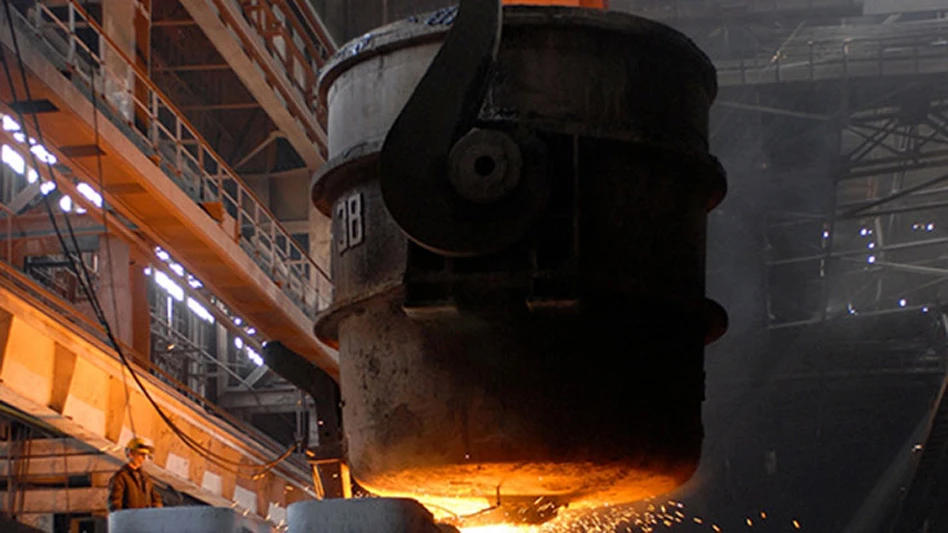
Photo courtesy of ArcelorMittal Corp.
A report issued in early September by global consulting firm McKinsey identifies what the firm considers three significant trends likely to affect the steel industry in the next several years.
A summary of the firm’s new 39-page report, “Evolving with steel: Future growth and opportunities,” by McKinsey staff members Vijayant Singh, Rajat Gupta, Amit Aggarwal and Ankit Agarwal, says, “Over the next decade and beyond, several trends will reshape the global and regional steel industry landscape.”
Three of the key ones, according to the co-authors, are 1) a continuing emphasis on decarbonization of production processes; 2) profitability pressures on steelmakers around the world; and 3) a likely reduction in output in the People’s Republic of China.
The need to lower carbon emissions will lead to “a push for green steel,” the co-authors say, indicating a McKinsey survey of “global decision-makers” projects demand for green steel could grow by a factor of 2.5 in the next five years.
Green steel can include recycled-content metal made via the electric arc furnace (EAF) process, though direct-reduced iron- (DRI-) fed furnaces and those powered by hydrogen or geothermal energy also can earn the “green steel” label.
Regarding profit pressures, the McKinsey analysts write in part, “Over the last seven to eight quarters, the steel industry has faced margin pressure across the globe. As countries step up exports to address domestic surplus capacity, margin pressures are expected to continue across the world.”
McKinsey joins the Paris-based Organization for Economic Cooperation and Development (OECD) and global steel producer ArcelorMittal as among those referring to China’s steel sector as being in an overcapacity situation.
The McKinsey authors writes, “The country remains the largest steel consumer in the world despite declining domestic demand, which is likely to drop from around 900 million metric tons in 2023 to between 800 to 850 million metric tons by 2035. The decline in demand has not yet led to reduced capacity (despite negative margins), resulting in increased steel exports from China.”
A figure of 850 million tons annually could strike some observers as on the high side for what the nation will need as it moves into the downslope of its steel intensity curve.
Producers in China have been making as much as 1 billion tons of steel annually as the country has rapidly urbanized and built out its transportation infrastructure in the past three decades.
In the United States, the nation considered to have the world’s largest economy, steelmakers produce 100 million tons or less annually. Even if China can attain a level of development and affluence on a part with the U.S., with a population about four times that of America, 500 million tons would seem a more feasible level—unless Chinese producers intend to export abundantly.
The report and its authors also focus on India. There, they write about a “quest for growth and self-reliance” that is making India “a vibrant site for industry, infrastructure and investment.
The report's authors continue, “Economic activity and urbanization are expected to boost demand for steel in India to between 240 million to 260 million metric tons by 2035, a compound annual growth rate (CAGR) of around 6 percent from 2023.”
While much of India’s current production is carbon emissions-intensive, the authors say decarbonization pressures are setting in there also. “Steelmakers will have to invest in capacity enhancement and sustainable technologies while being able to procure raw materials such as metallurgical coal (met coal), as well as high-quality iron ore and scrap for low-emission steelmaking technologies.”
The full 39-page McKinsey report on the steel sector can be downloaded from the consulting firm’s website.
Get curated news on YOUR industry.
Enter your email to receive our newsletters.
Latest from Recycling Today
- Unifi launches Repreve with Ciclo technology
- Fenix Parts acquires Assured Auto Parts
- PTR appoints new VP of independent hauler sales
- Updated: Grede to close Alabama foundry
- Leadpoint VP of recycling retires
- Study looks at potential impact of chemical recycling on global plastic pollution
- Foreign Pollution Fee Act addresses unfair trade practices of nonmarket economies
- GFL opens new MRF in Edmonton, Alberta






